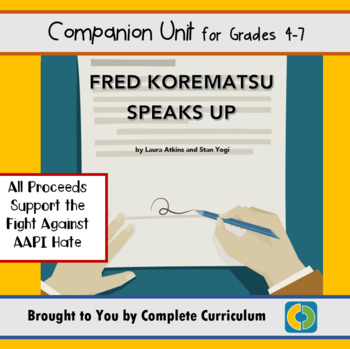AAPI Heritage: Fred Korematsu Speaks Up Unit Guide
- PDF
Description
**ALL PROCEEDS FROM THIS CURRICULUM WILL SUPPORT THE FIGHT AGAINST AAPI HATE**
Inspire your students with the perseverance and courage of Fred Korematsu!
This guide is a companion to the book Fred Korematsu Speaks Up, by Laura Atkins and Stan Yogi. This unit covers key literacy standards including: analysis of poetry,reading nonfiction texts, comparing and contrasting authors and information, identifying cause and effect, identifying main ideas and details, analyzing vocabulary, making claims, considering multiple perspectives, and citing evidence.
This unit provides essential questions, critical thinking activities for each chapter, as well as pre-reading activities. Multiple synthesis activities are provided at the end, including a choice menu to for students to determine how they want to show what they know.
Ongoing activities that students complete throughout the book are: a timeline log, a map of the western US, and a running list of causes and effects.
NOTE: This is a companion guide to the book. You will need to purchase the book separately.





